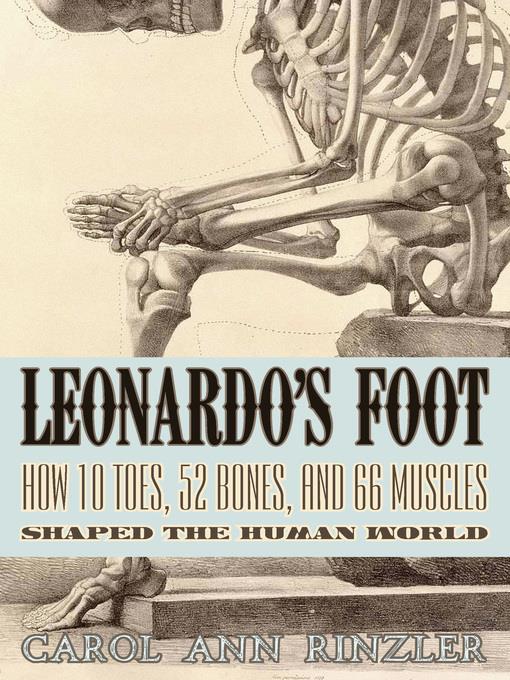
Leonardo's Foot
How 10 Toes, 52 Bones, and 66 Muscles Shaped the Human World
چگونه ۱۰ تا اسباببازی، ۵۲ تا استخوان و ۶۶ تا ماهیچه جهان انسان را میفریبند؟
کتاب های مرتبط
- اطلاعات
- نقد و بررسی
- دیدگاه کاربران
نقد و بررسی

June 17, 2013
Amidst many digressions, Rinzler provides a number of biological and anecdotal tidbits about human feet. The development of theories about how our bipedal stance affected human evolution is treated first, including some scientific missteps. Each chapter is an independent essay ostensibly on an aspect of the foot, but a discussion of clubfeet turns into a rambling, and not always accurate, appraisal of historical attitudes toward birth defects, infanticide, and euthanasia as well as the imbalance in health coverage between the first and third worlds. The book as a whole veers wildly in this mannerâfrom interesting information to highly tangential opinion pieces. An interesting section about the importance of the big toe morphs into anecdotes on how gout changed the world and then a page on a history of dangerous medications. The chapter on desire discusses foot fetishism, Cinderella, which senses are predominant in other animals, Biblical references to feet, foot washing, and suddenly, dissection. Those who enjoy nonsequetorial conversations may find this book entertaining, but the lack of substantiation for many of her statements deprives the reader of solid facts.

July 1, 2013
Rinzler (former nutrition columnist, New York Daily News; Nutrition for Dummies) presents a journey through medical discoveries and misconceptions, fairy tales, literary and pop cultural references, and a variety of learned theories, all relating to feet. However, ranging thematically from discussions of pheromones and binocular vision to chick lit and ancient Egyptian theology, her coverage of any one subtopic is so brief that few of the many subjects she raises are supported by enough context or argument to bring fresh understanding to readers. The author makes assertions, e.g., that artists of the Renaissance fostered hatred for the disabled by exalting the Greek and Roman ideal of bodily perfection, and then moves on without further exploration. Other times, the subject is jumbled (e.g., she refers to "portraits of the Christian God" and then supplies portraits of Jesus), or inaccurate (e.g., her elaboration on the proportions of Leonardo's The Vitruvian Man). Rinzler clearly enjoyed researching her subject and can't stop herself from going on interesting digressions, often bringing up one or two mostly unrelated topics within the course of a paragraph. She's at her best when discussing medical history and etymology. VERDICT While some may enjoy Rinzler's open and accessible voice, serious readers may prefer Margo DeMello's Feet and Footwear: A Cultural Encyclopedia, even though its coverage is not strictly the same.--Jessica Spears, Cooper Union Lib., New York
Copyright 2013 Library Journal, LLC Used with permission.

Starred review from June 1, 2013
Except for putting on socks and shoes or trimming toenails, people pay little attention to their feet. After all, feet are the furthest anatomical thing from the mindliterally. Health writer Rinzler lifts the lowly human foot to new heights in this appealing book. Soliciting assistance from the fields of art, evolutionary science, history, etymology, literature, and biomechanics, Rinzler shows how the human foot is much more than a conglomeration of tissues or a potential homesite for corns and calluses. Its unique design (the adducted position of the big toe, plantigrade sole, and firm arches) allows humans to stand up on two legs and remain uprightnot an easy task. Bipedal locomotion (whether walking or running) is even more difficult and amazing. In our evolutionary development, a reliable set of feet and upright posture likely preceded the emergence of our vaunted big brains. Certain conditions including clubfoot, gout, and flatfeet receive plenty of attention in the book. Foot fetish, the Chinese custom of binding feet, and the use of human feet as biblical symbols get discussed, too. Leonardo da Vinci wrote, The human foot is a masterpiece of engineering and a work of art. He got that right.(Reprinted with permission of Booklist, copyright 2013, American Library Association.)

























دیدگاه کاربران